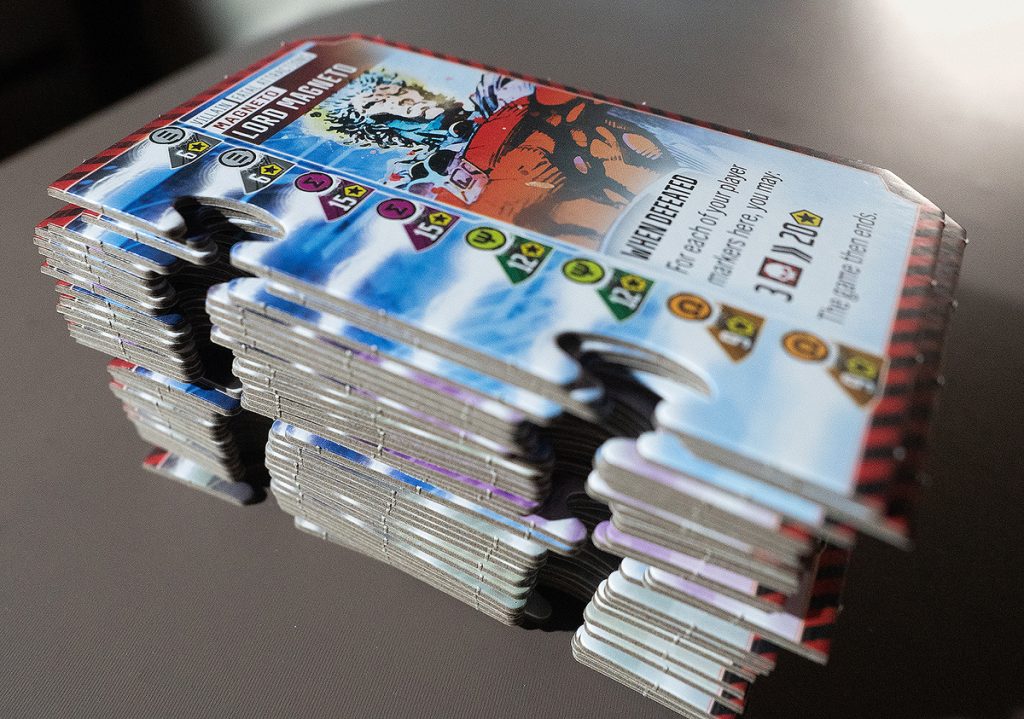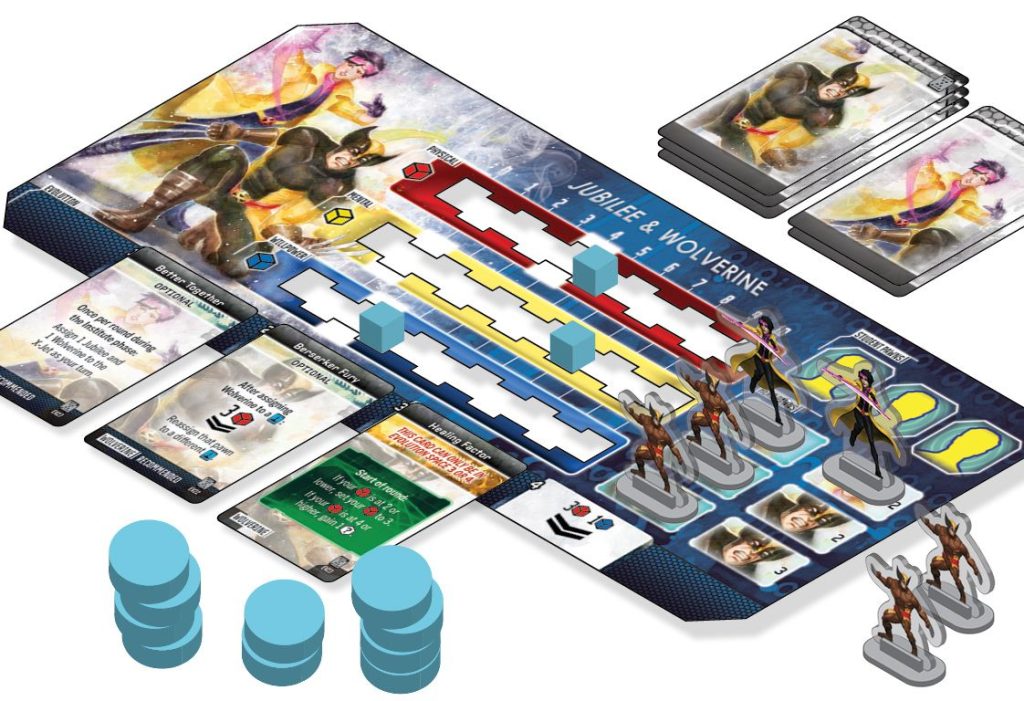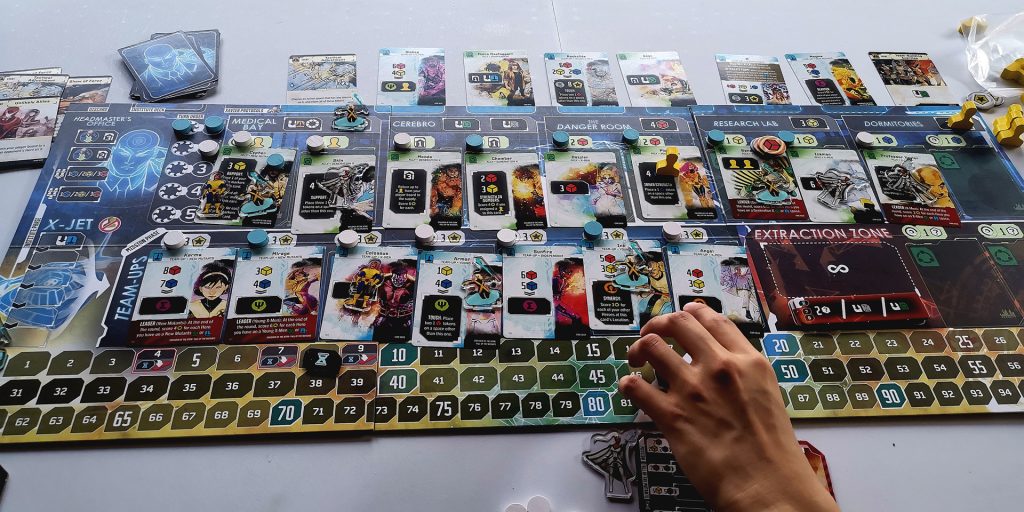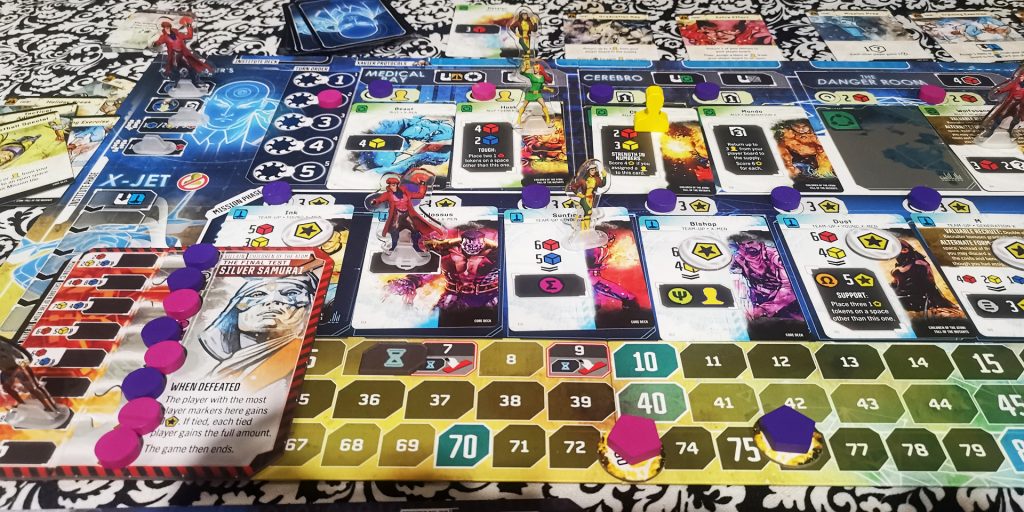Marvel: Age of Heroes Review | The Powers of X
Rodney Thompson, is back with an 'updated' version of the venerable worker-placement classic with Marvel: Age of Heroes.

Lords of Waterdeep is a worker placement classic that helped spur the golden age of boardgaming in the mid 2010’s. It’s designer, Rodney Thompson, is back with an ‘updated’ version of the venerable classic with Marvel: Age of Heroes.
Published by perennial Marvel IP holder and gaming juggernaut, Wizkids, the game has 2 to 5 players take on iconic X-Men teams in a competitive worker placement with focus on synergies and engine building as they accumulate points by recruiting allies, team ups and playing iconic X-men events to take out mutant villains. Does the game offer much more than its multi-awarded predecessor? Lets find out!
The House of X
The game comes with a game board, player boards, mission tiles, hero standees, villain tiles, institute cards, evolution cards, and various tokens. Unlike most games with the Marvel IP that give you a core box with the bare minimum to play, Age of Heroes includes a hefty stack of villain tiles (34 to be exact) and a multitude of X-Men ally and team-up cards showcasing many mutant heroes and team from across generations. In terms of thematic villain and hero content itself, I’d say the content in this one box would be similar to X-Men Marvel United and all its expansions combined (although gameplay is obviously very different).
The game uses standees with laser etchings from the Wizkid’s line of Heroclicks games, thus the standee quality is very good. The same can be said of the overall quality of components for this game – the art design is topnotch, cardboard and tokens are thick, cards are from good card stock. Coupling this with the amount of content in the box, makes it a good buy for component quality and quantity.
Like most games of its genre, the game board includes worker placement spaces, but also includes a large portion of ‘blank’ spaces which are filled up during gameplay, adding more placement spots and more game effects and synergies, making each game unique in terms of board layout. The player boards, which each player gets, also include room for customizability. They are two sided, with the advanced side giving each player unique abilities. Evolution cards are also added to the player board in game, adding to more unique player effects, and players can choose from a number of Evolution cards to play each game.
X of Swords
It is beyond the scope of this article to explain gameplay. One can check the link here to learn how to play:
This is a brief summary of play. There are two phases in the game, the Institute Phase and the Mission Phase. The Institute Phase is represented by the top half of the board, in this phase, players gain resources, play events cards, gain/cycle cards, add evolution cards, recruit allies (added worker placement spaces), call on team ups (an alternative way of doing damage). Players take turns placing either their hero standees or student pawns on different available spaces and get that space’s effects/resources/synergies/benefits/tokens.
The Institute phase is basically your preparation leading into the next phase, the Mission Phase. During the Mission Phase, hero standees that were prepped to go on missions may go on mission tiles or on team up spaces to do direct damage to the villains which give victory points; or can go to the extraction zone to get more benefits and resources. Play continues until the final boss is beaten and the player with the highest victory points wins.
The Age of the Mutant
Players who enjoy worker placement with multiple paths to victory will find much to enjoy with Age of Heroes. As new worker placement spaces become available, new opportunities and effects emerge and coupled with recruitment bonuses and evolution card synergies, the player gets a wide choice in his/her decision space. And because the game board changes with every game, this adds to non-linear decision making and game replayability.
Theme incorporation is the best I’ve seen in a “euro-style” game. The powers of the different player boards and effects and synergies on the team up, ally and event cards reflect very much what they represent in X-Men canon. Some, however, might find it strange having a competitive game amongst X-Men teams who are known to traditionally work together. But if one were to dig deeper into X-Men lore, you’d discover that many X-Men storylines revolve around the theme of differing ideologies and world views among members and many times the X-Men have split into teams reflecting these (ex Gold and Blue teams). In my opinion, the game emulates this ‘coop-etition’ in that you are fighting the same villains but want to do better to promote your team/ideology to the public or other mutants.
Despite the in-game strategic decision making, the game is quite easy to learn and teach and can be accessible to players new to modern boardgaming. The game however can run quite long (3hrs) when playing with higher player counts. The publisher has come out with online variants that shorten the game significantly if one wishes a more concise play experience.
As mentioned in the beginning, the game borrows heavily from Lords of Waterdeep and its expansions, so would you buy this game if you own these games already? I believe so. It has supplemental mechanics (ie assymetric player boards, evolution cards, etc) and three scenarios and theme incorporation that clearly sets it apart from its predecessors and make it a better game. Does it break new ground like hybrid worker placement games such as Dune Imperium? No, it doesn’t, it is still, at its core, a classic worker placement with an enhanced ruleset. So, if you’re looking for a totally novel experience, this may not be for you. Regardless, Age of Heroes is still a fantastic blend of well thought out mechanics and incorporation of source material. A game for both seasoned and new gamers and X-Men and worker placement fans alike.





